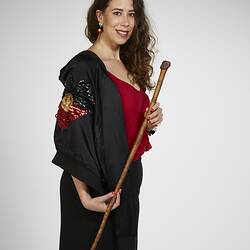Australian Indigenous - South-eastern Australia
Comprising close to 4,000 objects including bags, baskets, nets, traps, cloaks, items of body decoration and ornamentation, carvings, clubs, shields, spears, spear throwers, watercraft, breastplates, busts, historical objects, and works on paper and canvas. Mostly dating from the mid-nineteenth and early twentieth centuries, the collection is of invaluable importance to the Aboriginal people and communities who are seeking to investigate their cultural heritage and history in order to reconnect with this knowledge and ensure it survives and is passed on to future generations. Over sixty per cent of the collection is from Victoria, with items from Tasmania, most of New South Wales and south-eastern South Australia making up the remainder.
Significance
The most significant collection of indigenous historical and material culture from South-eastern Australia in the world, it contains some of the earliest collections from this region and a number of unique and rare items. It is also important for its association with notable historical figures and collectors such as A.W. Howitt, A.T. Holyroyd, P.C. Cole, I. De Beer, R.E. Johns, G.A. Robinson, F.C. Smith and H.A. Smith. The first register for the ethnographic collections was begun in 1888, although the origins of some sub-collections are likely earlier than this. Sporadic collecting was undertaken during the twentieth century, in part due to the lack of production of artefacts following the closure of missions, stations and reserves in Victoria. Since 1990 a specific curatorial focus has returned to this region.
